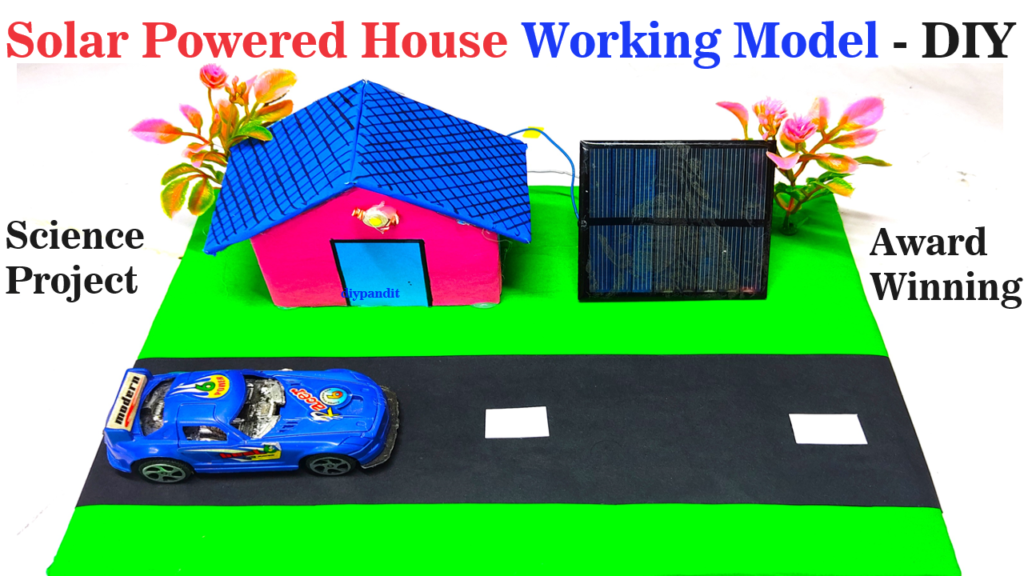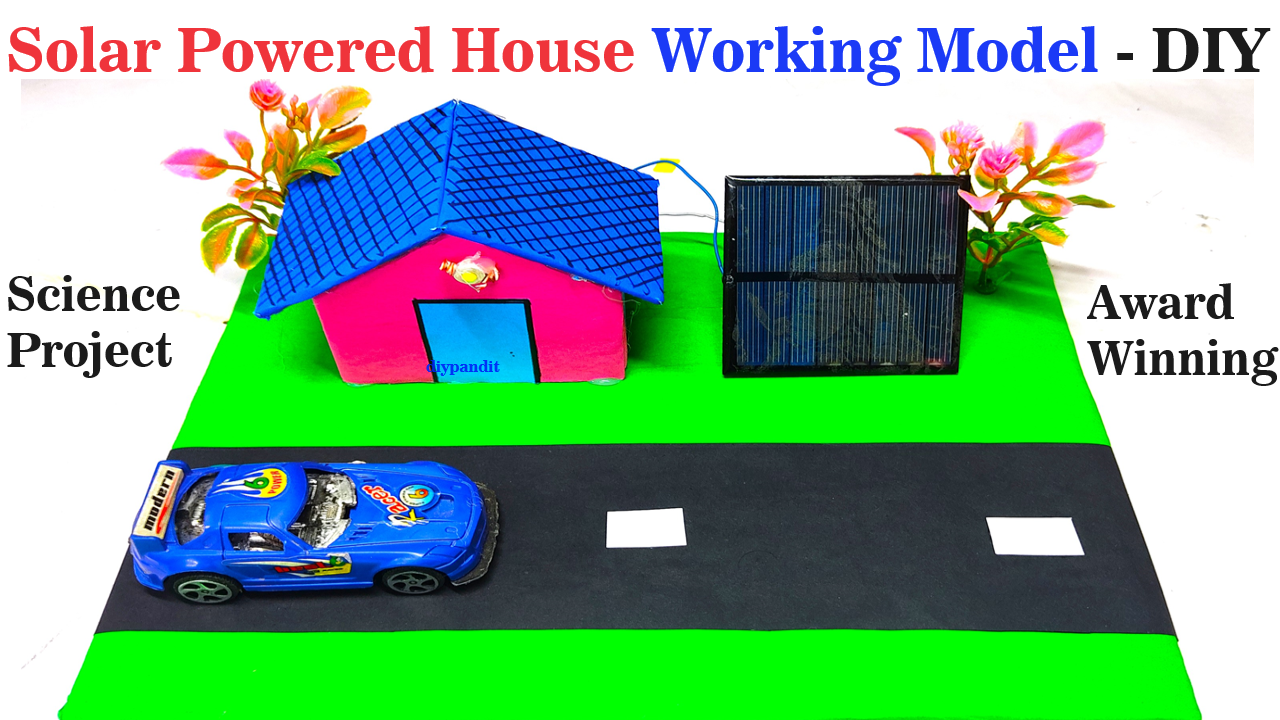Creating a solar-powered house working model with a small solar panel and LED lights is a great way to understand how solar energy can be harnessed to power electrical devices.
Here’s a step-by-step guide:

Materials Needed:
- Small solar panel
- House model (you can make one from cardboard or buy a pre-made model)
- LED lights (preferably with built-in resistors)
- Wires
- Battery (optional, for storing solar energy)
- Switch (optional, for controlling the lights)
- Glue or tape
- Tools for cutting and stripping wires
Steps by Step Video Instructions on Solar powered house working model :
- Prepare the House:
- If you’re making the house from cardboard, cut out the pieces and assemble them into a house shape.
- Make sure to leave openings for windows and doors where you want to place the LED lights.
- Mount the Solar Panel:
- Attach the solar panel to the roof of the house using glue or tape.
- Ensure the panel is positioned to receive sunlight effectively.
- Connect the LED Lights:
- Place the LED lights inside the house, positioning them in the windows or doors.
- Connect the positive (+) terminal of the LED lights to the positive (+) terminal of the solar panel using wires.
- Connect the negative (-) terminal of the LED lights to the negative (-) terminal of the solar panel using wires.
- Make sure the connections are secure and insulated.
- Optional: Add a Battery and Switch:
- If you want the LED lights to work even when there’s no sunlight, you can add a battery.
- Connect the positive (+) terminal of the battery to the positive (+) terminal of the solar panel.
- Connect the negative (-) terminal of the battery to the negative (-) terminal of the solar panel.
- If you’re using a switch, insert it into one of the wires connecting the LED lights to the solar panel or battery.
- Test Your Setup:
- Place the solar-powered house model in sunlight.
- If everything is connected correctly, the solar panel will convert sunlight into electricity, powering the LED lights.
- If you’re using a battery, charge it by placing the model in sunlight for some time, then test if the LED lights still work when there’s no sunlight.
- Adjust and Improve:
- Experiment with the positioning of the solar panel to optimize sunlight exposure.
- If the LED lights are not bright enough, you may need a larger solar panel or more efficient LED lights.

